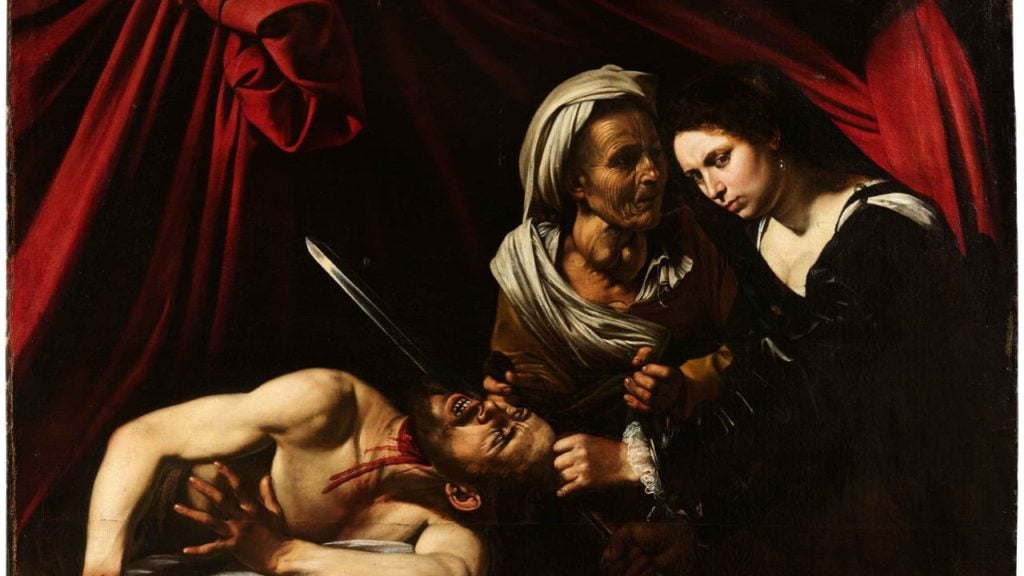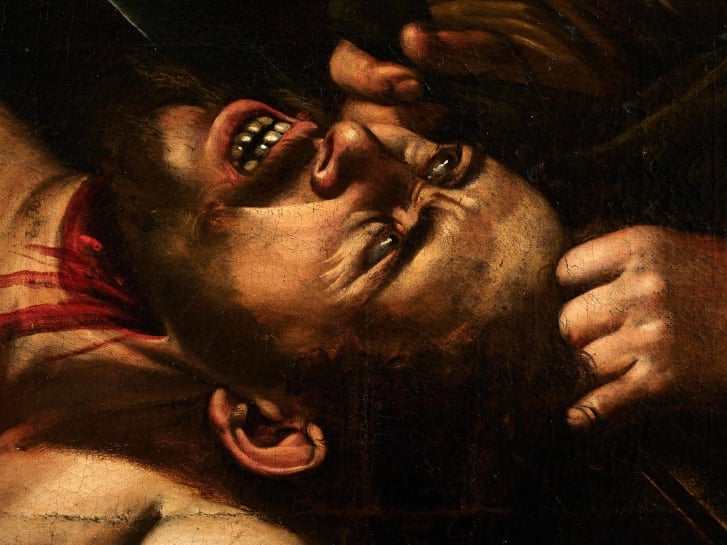Art & Exhibitions
A Contested Caravaggio Found in a French Attic Will Travel to New York Before It Hits the Auction Block for an Estimated $170 Million
The painting will be on view at Adam Williams Fine Art beginning May 10.

The painting will be on view at Adam Williams Fine Art beginning May 10.

Taylor Dafoe

Five years ago, a long-lost painting experts claim is the work of Caravaggio was found in an attic. Now, it’s coming to New York.
Judith Beheading Holofernes (circa 1607), which has divided scholars and captivated art-watchers the world over, will go on view at Adam Williams Fine Art in New York, May 10–17. It’s the painting’s only stop in North America before heading to auction in Toulouse in June, where it is estimated to sell for €100 million–150 million ($114 million–171 million).
“I saw the painting in Paris and thought it was an absolute masterpiece in fabulous condition,” Williams told artnet News at the VIP preview of TEFAF Maastricht, where his gallery is exhibiting until March 24. “I knew there were a lot of people in New York interested in it, so I said I’d be very proud to display it in my gallery. I’m not doing it to make money; I’m doing it because I love the painting.”
The story behind the picture is the stuff of a Dan Brown novel. In 2014, French auctioneer Marc Labarbe received a call from a client who had found the painting while clearing out a family attic. Labarbe brought in art appraiser Eric Turquin and his team, who surreptitiously studied the painting for over two years. In 2016, the painting was unveiled by the French Ministry of Culture, which placed a 30-month export ban on the work while it was restored and studied by additional experts.
The ban was lifted last December after the French government declined to purchase it. The painting was shown at London’s Colnaghi Gallery earlier this month and will go on view in Paris and Toulouse before it hits the auction block in this summer. It will uncharacteristically be offered without a reserve price.

Caravaggio, Judith Beheading Holofernes (circa 1607), detail. Courtesy of Cabinet Turquin.
Judith Beheading Holofernes depicts a scene from the Old Testament in which Judith, a widow, seduces the Syrian general Holofernes and then slays him to protect her people. It is believed that Caravaggio painted two versions of this painting. The first was rediscovered in 1950 and is currently on view at National Gallery of Ancient Art in Rome.
If the rediscovered second version is indeed by Caravaggio, it would be only the 66th work by the artist still in existence today. However, not everyone agrees that’s the case. When the newly discovered work was shown at the Pinacoteca di Brera in Milan in 2016, a board member of the museum resigned in protest.
Art historian and Caravaggio specialist Mina Gregori is also among the doubters. She believes the rediscovered work was painted by Louis Finson, a contemporary of Caravaggio who is known to have copied the original.
For New Yorkers, this May might be the only opportunity to ever see the painting in person and decide for themselves. Adam Williams Fine Art is free and open to the public, and will be open every day from 10 a.m. to 5 p.m. during the run of the exhibition.
Additional reporting by Sarah Cascone